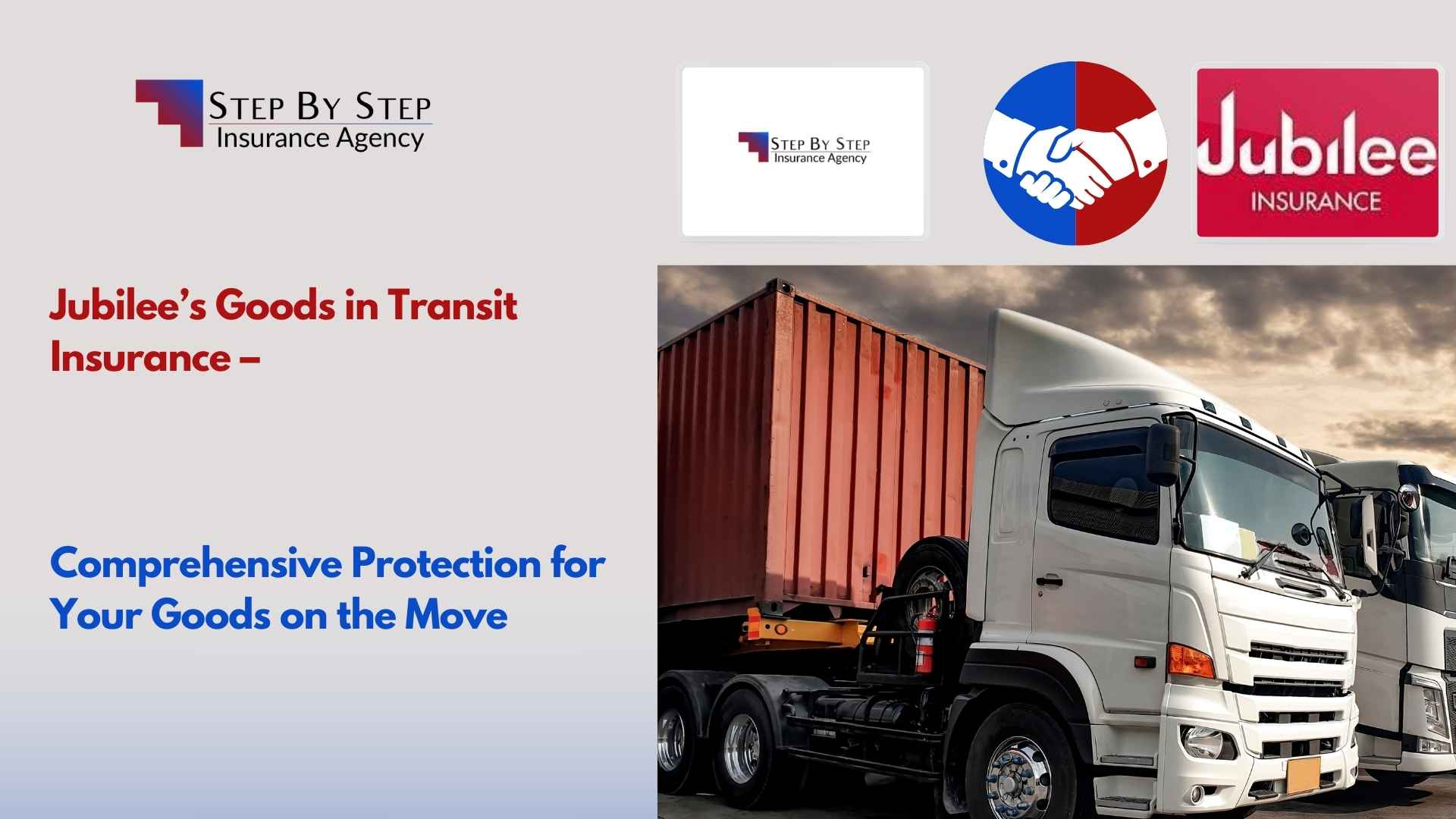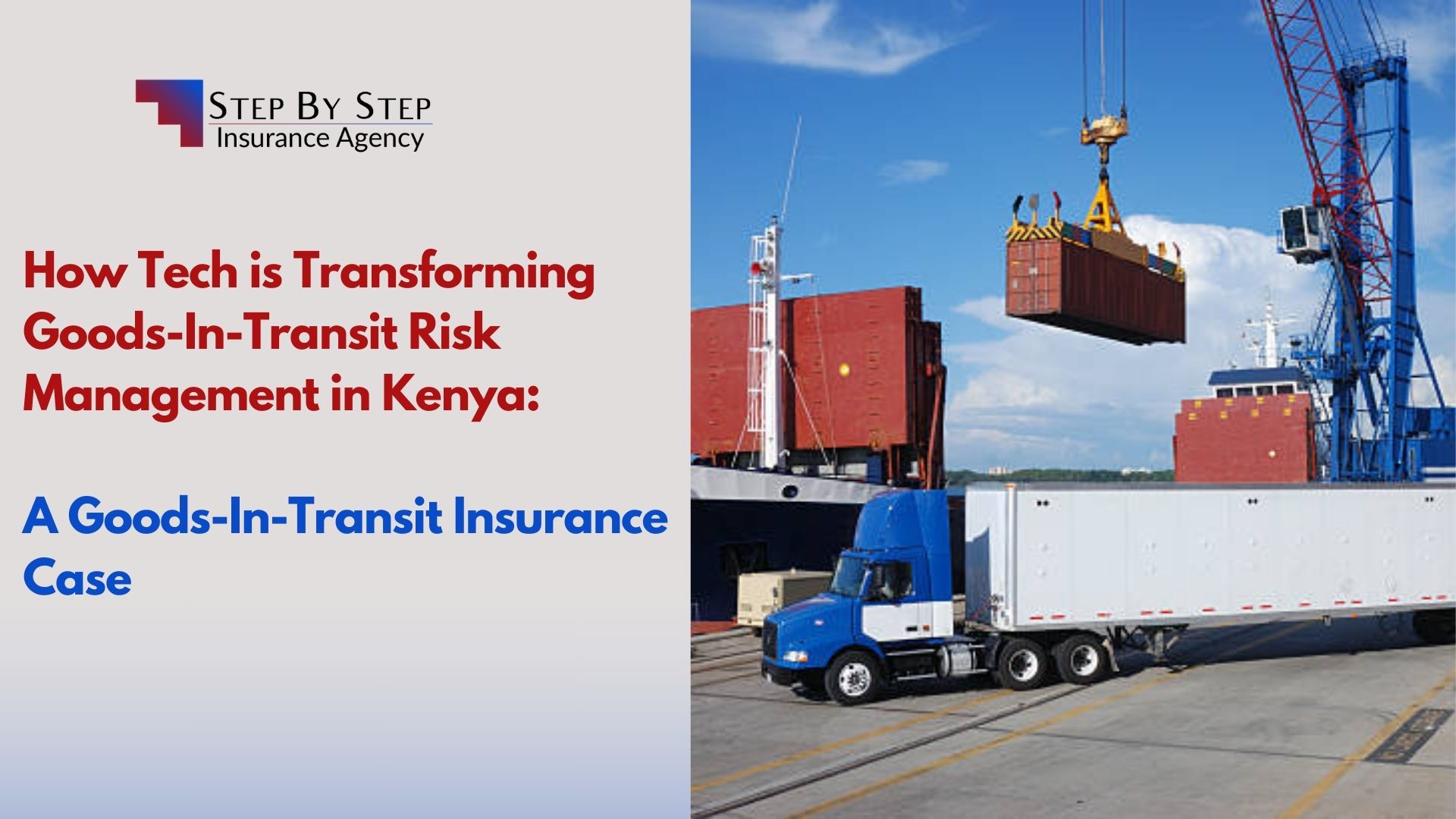Kenya as East Africa’s Logistics Hub: How Goods In Transit Insurance Comes In Handy
Introduction
Kenya has rapidly emerged as a logistics powerhouse in East Africa, thanks to its strategic location, investment in transport infrastructure, and vibrant trade corridors connecting landlocked neighbors like Uganda, Rwanda, South Sudan, and parts of the DRC. From the bustling Port of Mombasa to the Standard Gauge Railway (SGR) and extensive road networks, Kenya is shaping itself into a central artery for cargo flow in the region. This transformation isn’t just about moving goods—it’s about moving them safely, efficiently, and reliably.
Yet, with growth comes risk. Every shipment across borders or within Kenya’s dynamic towns and counties is exposed to various perils: road accidents, theft, fire, hijackings, offloading mishaps, and even natural disasters. That’s where Goods In Transit (GIT) Insurance becomes essential.
This article explores how Kenya’s role as a logistics hub amplifies the need for smart risk management tools like GIT insurance—and why partners like Step By Step Insurance Agency are critical in helping businesses navigate this space with confidence.
Key Takeaways
- Kenya’s logistics industry is booming, and so is the risk exposure for goods in transit.
- Goods In Transit Insurance protects against theft, fire, accidents, and mishandling.
Cross-border trade in East Africa requires strong GIT coverage for seamless operations. - Step By Step Insurance Agency offers tailored GIT policies and expert advice.
- Insuring cargo is a strategic move that builds client trust and guarantees business continuity.
Table of Contents
- Introduction
- Kenya’s Strategic Role in East Africa’s Logistics Network
- Common Risks in Goods Transportation
- The Importance of Goods In Transit (GIT) Insurance
- How GIT Insurance Supports Regional and Cross-Border Trade
- Step By Step Insurance Agency: Your Trusted Partner in Goods In Transit Cover
- Conclusion: Safeguarding the Future of Logistics in East Africa
Kenya’s Strategic Role in East Africa’s Logistics Network
Kenya is geographically positioned as the gateway to East and Central Africa. With its access to the Indian Ocean through the Port of Mombasa, the country facilitates over 80% of goods destined for Uganda, Rwanda, Burundi, and parts of the DRC. Here’s why this matters:
Port of Mombasa:
One of the busiest in Africa, it’s a vital entry and exit point for goods, recently expanded to handle higher cargo volumes.
SGR (Standard Gauge Railway):
Connects Mombasa to Nairobi and inland dry ports like Naivasha, offering fast, cost-efficient rail freight options.
Northern Corridor:
A major transit route facilitating road transport from Kenya to landlocked countries.
Air and Inland Transport:
Nairobi’s JKIA serves air cargo, while the road network connects Kenya’s economic hubs to remote areas.
As logistics scale up, so does the exposure to risk. More goods moving across longer distances equals more opportunity for mishaps. Businesses must therefore evolve not just operationally, but also in their approach to risk protection.

Common Risks in Goods Transportation
Transporting goods—whether across town or across borders—comes with a range of risks that can result in significant financial losses, damaged client relationships, and operational disruptions. In Kenya and the broader East African region, these risks are amplified by a combination of infrastructure limitations, rising crime rates, and unpredictable weather patterns.
Below are some of the most common threats that cargo faces while in transit—and why Goods In Transit (GIT) Insurance is critical.
1. Theft and Hijacking
Cargo theft is a major concern on long-haul routes, especially those connecting major hubs like Mombasa, Nairobi, Kisumu, and cross-border points like Malaba or Busia. Criminal gangs often target high-value goods such as electronics, pharmaceuticals, and fuel.
In some cases, entire trucks are hijacked, drivers are forced out, and the cargo disappears without a trace. These syndicates are increasingly sophisticated, using tracking jammers and lookouts to ambush vehicles in remote or poorly policed areas.
Without GIT insurance, such losses fall squarely on the transporter or business, which can cripple operations or even lead to legal disputes.
2. Road Accidents
Kenya’s road network, though vastly improved, still has dangerous sections. Uneven surfaces, potholes, overloaded vehicles, and reckless driving are everyday hazards. Add to that unpredictable traffic behavior and fatigue among long-distance drivers, and you have a cocktail for frequent accidents.
Road crashes can damage the vehicle, destroy cargo, and even cause injuries or fatalities. For perishable goods or time-sensitive deliveries, an accident can mean total financial loss.
Goods In Transit Insurance steps in to cushion businesses from such unpredictable events, helping them recover losses and resume operations faster.
3. Fire and Explosions
Accidental fires may be rare, but when they occur, the impact is devastating. Causes include fuel leaks, overheating engines, electrical faults, or chemical reactions in hazardous cargo. Fires can break out during transit or while loading/unloading at depots and warehouses.
For example, a small fire in a fuel tanker or a container carrying flammable goods can wipe out an entire shipment in minutes. And because fire spreads fast, the opportunity to salvage anything is slim.
A solid GIT policy covers such damage, ensuring your goods—and your business—don’t go up in smoke.
4. Weather Hazards
Kenya experiences seasonal floods, heavy rains, and landslides, especially in regions like Western Kenya, the Coast, and parts of Central Kenya. Bad weather can cause road closures, delays, or worse—damage to goods due to water exposure or transport vehicle overturns.
Strong winds, lightning, and other unpredictable natural occurrences can destroy cargo that’s not properly covered or sealed. Climate change has only increased the frequency and unpredictability of these weather events.
GIT Insurance helps offset the cost of damage or delay caused by nature’s wrath, protecting your profit margins and customer relationships.
5. Improper Handling
Sometimes the greatest risk comes not from nature or criminals—but from human error. Cargo can be dropped, stacked incorrectly, exposed to unsuitable temperatures, or even mislabeled and lost.
Mishandling is especially common during:
- Loading and offloading at warehouses
- Transfer points at dry ports or border posts
- Sorting centers for courier and logistics firms
This risk is more common with fragile items, electronics, perishables, and items requiring special care. Unfortunately, mistakes happen, and when they do, they can be expensive.
GIT insurance acts as a financial cushion, allowing you to absorb the cost of mistakes without suffering long-term damage.
Why This All Matters
These risks aren’t just theoretical—they happen every day. If you or your clients are in the business of transporting goods, then you are already exposed. The question is not whether risk exists, but whether you’re prepared when it strikes.
That’s why having Goods In Transit Insurance through a trusted partner like Step By Step Insurance Agency is a smart business decision. We help you identify your exposure, tailor the right cover, and walk with you when the unexpected happens—so you can stay on the road to success.

The Importance of Goods In Transit (GIT) Insurance
Goods In Transit Insurance is designed to cover loss or damage to goods while they are being transported from one location to another. It applies whether you’re using road, rail, or inland waterway systems.
Here’s how it helps:
Financial Protection:
Reimburses the value of goods lost or damaged in transit, helping businesses avoid crippling losses.
Business Continuity:
Ensures that businesses can bounce back quickly from incidents without interrupting supply chains.
Client Confidence:
Traders and manufacturers are more confident partnering with logistics firms that protect their cargo.
Flexibility:
GIT policies can be tailored to the type of goods, mode of transport, and distance involved.
Legal Compliance:
In some cases, transport contracts require proof of GIT coverage before cargo is handed over.
How GIT Insurance Supports Regional and Cross-Border Trade
Kenya’s position as a trade facilitator for East Africa means cargo doesn’t just move within its borders—it crosses international lines. Goods In Transit insurance:
Builds Trust Across Borders:
Traders and exporters from Uganda or Rwanda feel more secure dealing with Kenyan logistics firms who are insured.
Reduces Disruption Costs:
A damaged shipment to Rwanda, for instance, doesn’t result in legal disputes or losses—if GIT cover is in place.
Protects Against Foreign Jurisdiction Risk:
GIT insurance ensures you’re not at the mercy of another country’s legal system when damage or loss occurs.
Simplifies Claims:
Insured businesses can process claims without back-and-forths between multiple countries or governments.
Enhances Reputation:
Having GIT insurance builds credibility with customs, clearing agents, and multinational clients.
Step By Step Insurance Agency: Your Trusted Partner in Goods In Transit Cover
At Step By Step Insurance Agency, we understand that logistics isn’t just about movement—it’s about peace of mind. As a licensed insurance agency working with leading underwriters in Kenya, we provide tailored GIT insurance solutions that align with the unique risks of regional trade and local cargo movement.
What we offer:
- Custom GIT Plans based on your fleet size, cargo value, routes, and destinations.
- Fast Claims Support to ensure minimal business interruption.
- Risk Advisory Services helping logistics companies identify blind spots and improve safety protocols.
Our goal is to walk with you—step by step—as you grow your logistics footprint in Kenya and beyond.
Conclusion: Safeguarding the Future of Logistics in East Africa
Kenya is no longer just a transit country—it is a logistics leader in East Africa. As the country continues to expand its infrastructure, streamline customs processes, and attract international trade, the logistics industry will grow in size and complexity. With growth, however, comes exposure to more risk.
Businesses that move goods—whether you’re a manufacturer, courier, fleet owner, or third-party logistics company—must proactively protect themselves. Goods In Transit Insurance is not a luxury. It’s a safeguard, a stabilizer, and a growth enabler.
In the face of rising road usage, geopolitical tensions, and shifting trade dynamics, being insured is being smart. And with a reliable partner like Step By Step Insurance Agency, you get more than a policy—you get protection with a human touch.
Don’t wait for loss to teach you the value of insurance.
Talk to Step By Step Insurance Agency today for a free consultation on Goods In Transit Insurance that fits your logistics business.
Call: 0729712200 / 0716534192
WhatsApp: 0722888350
Email: info@stepbystepinsurance.co.ke
Website: stepbystepinsurance.co.ke/
#LogisticsKenya #GoodsInTransit #InsuranceKenya #StepByStepInsurance #EastAfricaTrade #CargoProtection #LogisticsSafety #SupplyChainAfrica #BusinessContinuity #KenyaTransport #InsuranceTipsKE






